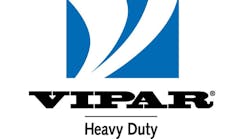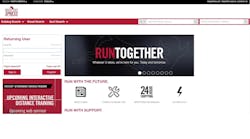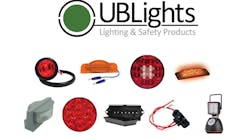These days, trucks are plentiful in terms of models, Gross vehicle weight (GVW), and equipment options.
Bob Aquaro, vice-president of Tara Commercial Vehicle Consulting Services Inc, believes that no company manufactures a “bad truck.” But some trucks have features that are more suitable to one particular vocation, so knowledge is necessary to determine which truck will work for which application.
“Get prepared,” he said. “Preparation is sometimes lacking, not in any particular business, but just in general. We don't prepare enough. We don't sit down and do enough homework. We probably don't ask enough questions. As a result, sometimes we make mistakes. Sometimes mistakes are costly.
“The cost could be measured in different ways. I could measure it in a lack of customer satisfaction. Your goal basically is to completely satisfy your customer. Do what you say you're going to do and make the customer a happy camper so when he gets his truck, it acquires the speed it's supposed to acquire to handle a load when it's supposed to, and it's the right truck, it's maneuverable, and economical.”
In “Ensuring Your Next Truck Chassis Matches the Job Requirements,” Aquaro said the process of specifying the chassis for a vocational vehicle typically goes wrong when the chassis is too small and overloaded, the chassis is too large and thus creates an excessive initial cost and weight penalty, there are certification and maintenance issues, there is incorrect wheelbase selection that creates poor handling and the inability to carry full GVWR, or there is component interference.
Other problems:
- Incorrect options that cause unplanned modification costs.
“It could be something as simple as you ordered it with a certain piece of equipment. Maybe an auxiliary fuel tank. But the fuel tank installation caused maybe the DEF tank to be relocated, and all of a sudden, what I thought was my clean CA is not, because the DEF tank is where I didn't think it'd be. It's an upfitter problem, a modification problem. Maybe it's a battery box. Always ask questions to people who know about that chassis. What are the changes if I order this option? You also could have upfitter delays and high long-term maintenance costs.”
- Unsuitable frame: too weak, too heavy.
“If the frame is too light, it could have frame fatigue and equipment failures. So we go to a very heavy frame, which is great, but we have added so many pounds to the truck that we have poor fuel economy. You need to look at those things.”
- Improperly selected powertrain that results in poor performance, high fuel costs, and increased maintenance and operating costs.
“We really need to find a powertrain that's going to be economical to the customer. We don't want to underpower the truck, but we certainly don't want to overpower the truck.”
Match chassis to application
He said that matching the chassis to the application results in increased productivity/reliability, reduced operating costs, reduced maintenance costs, extended vehicle life, improved safety, and customer satisfaction.
“Develop the complete package,” he said. “Follow a logical process. Don't buy an incorrect chassis and then try to make it work. Don't make a decision based on what everyone else is doing. Don't assume that what worked in the past will meet your current needs.
“Don't guess. Guessing just gets you in trouble. Ask questions if you don't know. Prepare a list of intelligent questions ahead of time. Interview the customer, driver, user, etc. You're asking questions like, ‘What problems are you having with your current truck? Why are you getting rid of it? Are you replacing a vehicle? 10 vehicles? How old are they? Let me see the maintenance records. Do you fuel in your yard or someplace else?’
“Always remember the customer is not necessarily the driver. The driver is somebody else in many cases. He can help you. He knows what's happening with that truck. Start with a clean sheet of paper. Look, touch, smell. Use all of your senses. Write it down. Take notes. Stay awake.”
The chassis selection process starts with establishing unit requirements: gross chassis payload requirements; required CA; second-unit weight distribution; chassis options (fuel tanks, DEF, batteries); component interference issues; trailer/towing requirements; and PTO requirements, which Aquaro said are not as simple as they used to be.
“Define the chassis application requirements,” he said. “Make a preliminary chassis selection, preliminary payload and weight distribution analysis, verify the suitability of the preliminary chassis selection, spec the final chassis components, verify chassis component weights/locations, and do the final weight-distribution analysis.”
Then define the chassis application:
- Operating environment
Is it a dusty area? Is it on-road? Is it on-road and then goes off-road? Is it in snow? Is it in Florida? All of these go into the decision of what chassis you want to select.”
- Maintenance environment
“Does it get maintenance? Are there mechanics who take care of this truck or does he go elsewhere to have the truck maintained? Looking at his fleet, it's easy to tell whether a truck has been abused or maintained.”
- Projected life cycle of the application
“How old his current fleet is will give you an idea of how long he wants to keep it.”
- Drive cycle
“On-road/off-road operation, length of highway runs, etc.”
- Duty cycle
“Idle time, etc.”
In identifying the valid chassis functional requirements, the payload requirements — gross unit weight, special dimensional considerations, and trailer loadings (GCWR) — are important, along with green truck considerations.
“There are considerations for some people,” he said. “They want that type of vehicle. If your customer says, ‘This is what I want,’ you have to see how that chassis is going to interface with what he wants to do. It's one story to say, ‘I want to be clean and green.’ It's another to say, 'This clean-and-green truck will do what I need it to do. If it doesn't, you probably do not want a green truck.”
The design constraints must be defined: overall weight, dimensions, environmental, contractual, regulatory, and financial.
Chassis checklist
Chassis-selection fundamentals:
• Match the chassis to the application.
• Don’t overload the chassis.
Gross vehicle weight rating (GVWR) is the maximum total vehicle weight, measured at the tire-ground interfaces, for which the vehicle possesses components adequately rated to safely carry. It cannot exceed the sum of all gross axle weight ratings.
Gross combined weight rating (GCWR) is the maximum allowable weight of a combination vehicle at the ground with a trailer or trailers including vehicle, equipment, driver, fuel, and payload (everything that moves with the vehicle.)
Gross axle weight rating (GAWR) is the value specified by the vehicle manufacturer as the load-carrying capacity of a single-axle system, as measured at the tire-ground interfaces. If one axle is overloaded, the whole truck is overloaded.
The Maximum unladen vehicle weight (UVWmax) is the value specified by the vehicle manufacturer as the maximum allowable unloaded curb weight for a modified or completed vehicle.
“No one is exempt from compliance with Federal Motor Vehicle Safety Standards,” Aquaro said. “You’re the final vehicle manufacturer in most cases, which means you have to certify that truck. So you shouldn’t take that lightly. That’s a major, major responsibility. You may be exempt from highway loading limits but you cannot overload the chassis.”
• Comply with the chassis manufacturer’s upfitting requirements.
“Basically, this is compliance with the body builders book. All manufacturers have a body builders book. They also have an incomplete vehicle document that gives you some tremendous guidance on how to complete that vehicle.
He said that if the final manufacturer of a vehicle complies with all of the requirements established by the chassis OEM, the original certification will pass-through to the completed vehicle. If the vehicle is not completed within the guidelines established by the incomplete-vehicle OEM, the final manufacturer must independently certify the completed vehicle.
• Completed or modified vehicle certification.
The final manufacturer of a vehicle must certify that the vehicle, as completed, complies with all applicable federal standards. A vendor who modifies a previously completed vehicle must certify that the modified vehicle still conforms to applicable standards and/or that no safety devices have been rendered inoperative (snowplow).
“Weight distribution is an issue because of braking,” he said.
• Comply with applicable regulatory standards.
State weight and dimensional criteria, state and federal operating restrictions, Federal Motor Carrier Safety Administration requirements, and OSHA/MSHA, ANSI, etc.
Exhaust gas
He said a preliminary chassis selection should be based on application, design constraints, the required clear-cab-to-axle length needed to accommodate the selected body, and second-unit payload requirements.
“One of areas where most bodybuilders have the greatest amount of difficulty is in the required exhaust gas configuration,” he said. “When you're looking at cab-to-axle dimensions, what questions do you want to ask? Do you want to ask, ‘What is the cab-to-axle dimension of this truck?’ or ‘What is a usable cab-to-axle dimension of this truck?’ Most guys get in trouble because they don't ask that.”
Application considerations include: overall length, turning diameter, weight distribution, visibility, ease of cab access, ride comfort, availability of desired clean CA, required payload ratings available, required frame rating available, required exhaust configuration available, and compatibility with special equipment requirements.
In developing a preliminary payload and weight distribution analysis, ID the weight and dimensional data for preliminary chassis selection (wheelbase, front axle to back-of-cab dimension, cab-to-body dimension, passenger seating data, and chassis weight on the front and rear axles).
To verify net payload capacity, subtract the weight of selected chassis and all permanently installed components (body, special equipment, etc) from the chassis GVW rating to insure the unit will have an adequate net payload capacity to meet requirements.
Make a preliminary weight-distribution analysis. Using data from layout drawing and chassis information, determine the location of horizontal CG, in relation to the front axle, for each discrete component.
“For every truck you work on or build, please look at weight and dimensional data for that chassis and put it into a weight-distribution analysis,” he said. “Looking at weights and dimensional data is critical. If it is a crane, where is it going to go on the truck? Is it articulated, trolley, auto boom? Where is this used? Is it used off-road? Is it going to be on level ground? Determine the net payload capacity of the truck. Look for chassis GVW that will be there with some cushion. Never less. Always a bit more. Find that perfect happy medium. If you don't know what something weighs, weigh it.”
Verify the suitability of preliminary chassis selection: Required GAWRs available? Required GVWR available? Required GCWR and trailing weight rating available? Brakes? Required/desired frame available? Desired powertrain available?
Are required GAWRs available?
“In many cases, the axle weight rating limiting factor is the tire,” Aquaro said. “It's generally not the spring or suspension or steering. It's essentially tires. What's the weakest link? Generally it's the tires. Many manufacturers offer a variety of tire applications. Ask the question: If I go to this tire, will this front-axle weight rating change?
“Axle ratings must match or exceed maximum calculated loads. Tire and suspension component ratings must match or exceed axle ratings to utilize full capacity of axles. The frame rating may restrict usable axle capacity ratings.
“The GVW rating is typically less than the sum of GAWRs. The rating can be limited by the frame, wheelbase, foundation brakes, engine and/or transmission selection, axle ratio, and payload distribution allowance. The GCWR may be limited by the same factors as the GVWR. Usable trailing weight is usually limited by vehicle payload requirements and weight on axles — rear for the aft-mounted hitch, all for fifthwheel/gooseneck-type hitches.
“OEMs establish minimum frame ratings based on GVWR, GAWR and wheelbase. Equipment vendors may require minimum frame requirements for mounting of equipment such as cranes or aerial lifts.
“Frames are rated by their section modulus and by the yield strength of the frame material — usually steel. The section modulus is a measure of frame strength and rigidity as determined by the shape, material thickness, flange width, and depth of the frame — expressed in cubic inches. Section modulus is not the same throughout the length of the truck frame. Published section modulus is the strongest part of the frame, usually just behind the cab. Other sections may be lower, or on rare occasion higher, than the published area. Section modulus affects weight.”








